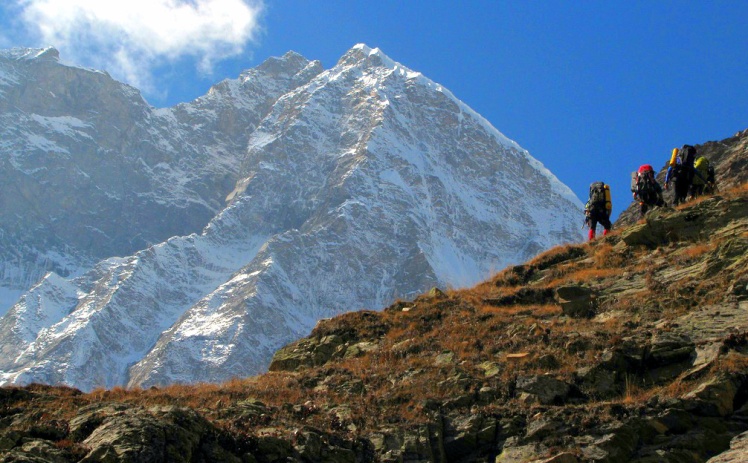
Mountaineering in India benefited from an immediate injection of climbing pedigree brought forth by a few decorated ascensionists in 2016. While the compass of many mountaineers remained fixed on Everest, there are a few who chose arduous climbs over famed Himalayan peaks.
The “Anti Everest” wave is steadily picking up among International Climbers. The first ascent of Meru Shark’s Finn in Garhwal Himalayas became the game changer. Suddenly there is a noticeable interest among elite alpinist looking for technically challenging and dangerous mountain peaks in India to climb.
We list 4 most significant, innovative ascents during 2016 in the Indian Himalayas. They make the cut for their groundbreaking new routes and first free ascents feat.
Peak: Vishnu Killa, Uttarakhand
Elevation: 5,968 meters | Expedition date: 6th – 29th May 2016
The Climbing Team: Widely renowned Alpinist Martin Moran and his 7 member team made the first ascent of Vishnu Killa (Vishnu’s Citadel) (5,968m) in Garhwal Himalaya. Martin is credited for over 14 first ascents in the Indian Himalaya with clients including South Face of 6,861 meters Nanda Kot (1995), Nilkanth West Ridge (2000), and Cheepaydang (6220 meters) (2014).
Why Climb Vishnu Killa?
“As the name on a map Peak-5,968 doesn’t stimulate the romantic juices. I spotted it on an old Survey of India map, the highest point of a cluster of ridges on the southern fringe of Garhwal Himalaya. The range is called Vishnu Ghar Dhar – the ridge of Vishnu’s abode – and I had previously admired it from a distance. The peaks may not top the magic 6,000 meters barrier but they looked complex, serrated and heavily glaciated. Only one of them was known to have been climbed. Peak 5,968 meters was almost certainly virgin. Ascents at sub-6,000 meters altitude are possible on a three-week time budge.”
Martin Moran
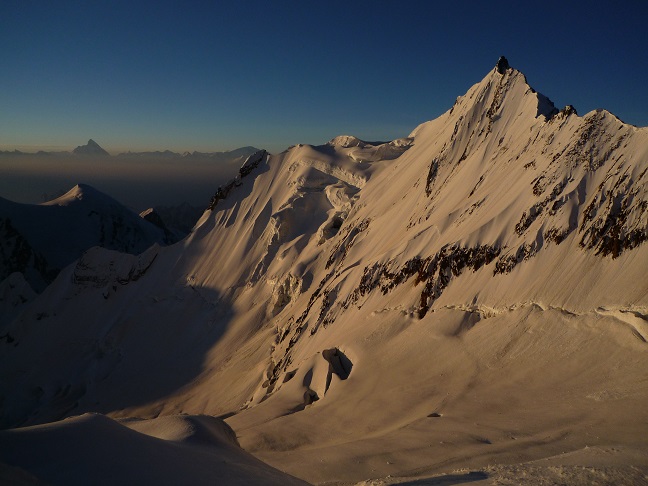
The Hurdles
A mass retreat of Porters & load ferrying of over 500 kg of supplies were some of the logistical nightmare faced by the team. Martin and his climbing partner Francis ferried over 250 kg of abandoned load to the base camp among themselves alone.
The Climb
“A happy day was spent dozing, brewing and feeding in our tents. When the sun went down we settled to four hours’ repose and got up at 10.30pm to start the summit bid. Francis forged ahead with youngsters, David and Phil, and stalwart ‘oldie’ Raymond who had only just recovered from fever. The descent from the col was the psychological threshold. Now we were committed. The night hours passed in a serpentine ascent of the glacier, weaving round huge crevasses and ice walls. Adele and I met the dawn at 5700m on the upper slopes. The eastern skyline was punctured by the spears and obelisks of the great peaks of the Nanda Devi range. The sunrise came slow but at 6.00am the sun burst forth in glory. Soon after, Francis and team passed us on their descent, close to two hours ahead of us. Had they been to the top? Well, yes and no. True to the sporting tradition of amateur mountaineering they had stopped three meters below a crowning cornice and decreed that the summit plinth should remain the domain of god Vishnu and his cohorts. Adele and I applied no such scruples on our arrival. With the aid of two axes, she heaved up the overhang with a timely push on her bottom from below. The rest of us followed, most poignantly Heera and Mangal, for whom this was one of their cherished local summits.”
Martin Moran
Peak: Sersank (Shiv Shankar) , Himachal Pradesh
Elevation: 6,050 meters | Expedition date: 30th Sept. – 5th Oct. 2016
The Climbing Team: Mick Fowler and Victor Saunders climbed the virgin North Face of Sersank Peak in alpine style in over 8 days. The dynamic duo reunited after 29 years gap to tackle the 1,100 meter North buttress.
“We climbed a lot together in the 1980s but in the ’90s we went our separate ways with Victor becoming a mountain guide based in Chamonix and me sticking with my tax office job in the UK,” Fowler said. “We are very different personalities but the banter between us is good and we think the same way in the mountains. Climbing together again just felt like carrying on where we left things 29 years ago. At 66 years old, Victor has lost none of his ability, drive or determination. He is a truly remarkable man.”
Mick Fowler – Alpinist Magazine
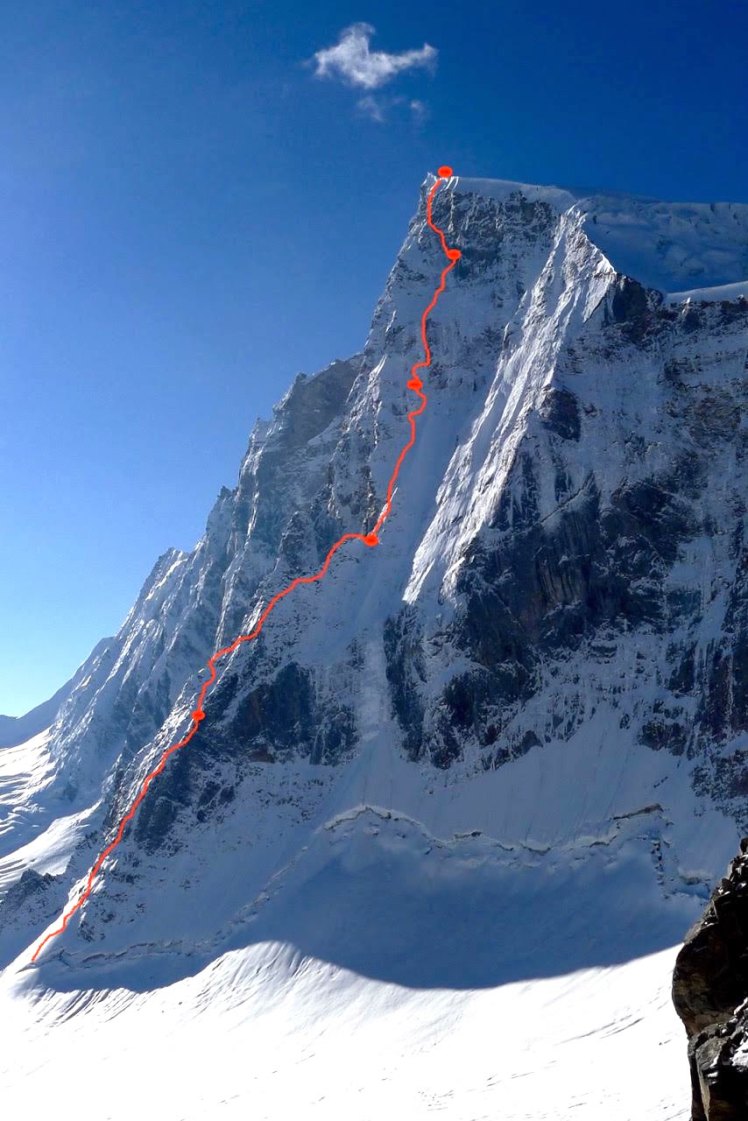
The approach to the Climb
The north wall of Sersank Peak is approached by entering a gritty climb to Sersank Pass. From the Pass, there are two beautiful spurs in view. From here is an extremely difficult vertical ice wall to tackle for the summit.
“The technical difficulties were exciting, varied and challenging,” It was a brilliant and memorable outing. The first day was crossing the Sersank La to the foot of the face. The second day was slow going with powder on steep rock. The third day was mainly a sharp, exposed crest with powder and rock challenges (crampons removed at one point) and the fourth, fifth and sixth days were fantastic ice/mixed climbing. Day 7 was mixed/snow climbing to the summit followed by glacial terrain in descent. Day 8 was very complex and satisfying glacial terrain involving several abseils from abalakovs.”
Mick Fowler – Alpinist Magazine
Peak: Thalaysagar, Uttarakhand
Elevation: 6,974 meters | Expedition date: 9th – 19th Sept. 2016
The Climbing Team: The Russian team of Dmitry Golovchenko, Dmitry Grigoriev, and Sergey Nilov did the first ascent of a route they named Moveable Feast, on the north buttress of Thalay Sagar. Golovchenko and Nilov are recipients of the prestigious Piolet d’Or award for their 2012 ascent of Muztagh Tower (7,284 meters) in Pakistan.

Beats of Freedom on Thalaysagar
The North Wall of Thalaysagar is regarded as the test pieces of modern mountaineering. The north face of the peak has been climbed by 5 different routes, some more direct than others. The key difficulty in the direct routes is a notorious band of shale near the summit, which presents rotten and dangerous rock.
The Russian Trio had plans to climb Jannu Peak in Nepal. However, a permit issue got them to attempt Thalaysagar as a backup option instead. They chose the most difficult line of ascent, a 1,400 meter, ED2 WI5 M7 A3 F5c North Buttress. The plan was to attempt the wall without the use of a portaledge, something, never done on this wall before.
“Our route starts from a crevasse, between ice and rock. The first 500-600 meters climb a steep slope of ice and snow. Then you deal with the first bastion, vertical rock with sets of cracks all filled with ice. It took us 2 days to climb 200 meters. Due to the wind and weather conditions, even the vertical sections were covered in snow and ice. And if you see a rock, it most probably means that it is both steep and smooth. Further, up, the mixed climbing begins up the 300-400m high, 70-80° rock barrier. One of the ledges for our tent was under the overhanging rock (we had to chop some ice to build it) and we found some equipment there: ropes and some aid climbing gear. We assume it was left by the 1994 Italian expedition. One pitch further leads to the summit bastion: black and quite loose rock, overhanging at 110 degrees. We tried to bypass this, however, we were unsuccessful and eventually decided to climb it straight up. After the bastion, the final section starts and a snow slope leads you straight to the summit. Here we took some pictures and later we found some Indian fixed ropes and used them for the descent.”
Dmitry Golovchenko – http://www.mountain.ru/
Peak: Chaukhamba III, Uttarakhand
Elevation: 6,974 meters | Expedition date: Oct. 2016
The Climbing Team: Jason Kruk, Joel Kauffman and Tad McCrea established a 1,600-meter route up the south ridge of the unclimbed Chaukhamba III. The team named the new route as “SAB KUCH MILEGA” (No Fun Allowed!).
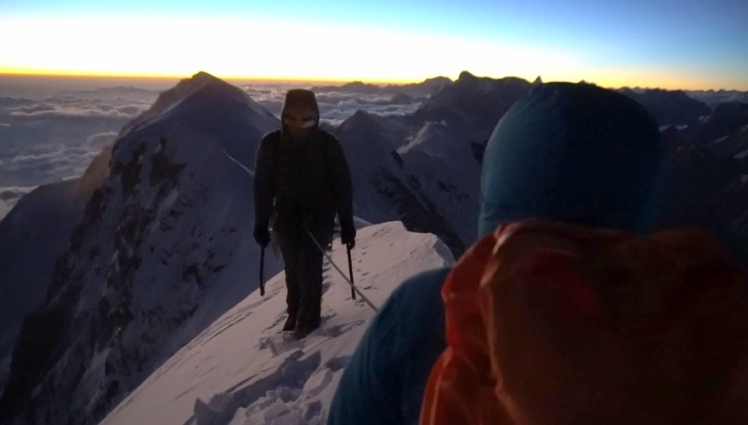
The Climbing approach
“We went in light and pure alpine style spending 35 days in the Panpatia Bank, 6 days on the route, and 12 days away from our base camp for the final push. The cocktail produced an odyssey that was mind bending, time transcending, and ego breaking.”
Jason Kruk
There is very little information available over the details of the climb. Jason Kruk has shared a few pictures and a brief video of the climb. Enjoy.
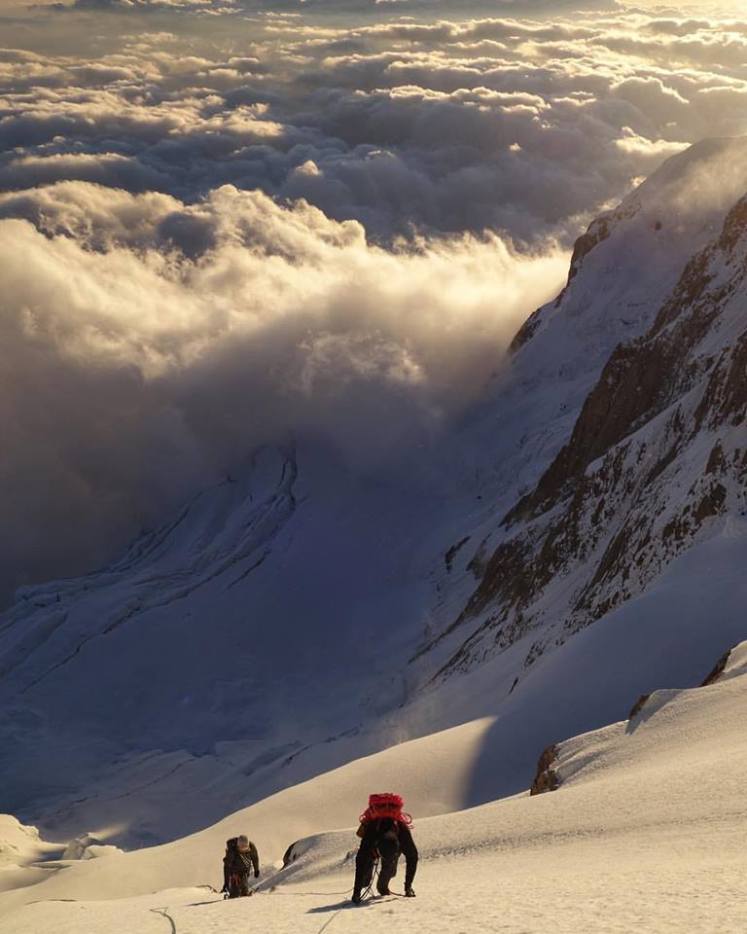

Lead Picture & Vishnu Killa Picture Credit: Martin Moran, Sersank Peak Picture Credit – Mick Fowler/Victor Saunders collection, Thalaysagar Picture Credit – Dmitry Golovchenko, Chaukhamba – Jason Kruk, Ted McCrea. Special thanks to Alpinist Magazine, Mountain RU for citations and visual references.

Excellent! The only regret re high standard alpinism in the Indian Himalaya is that it is still the domain of elite climbers from around the world except Indians …. I hope that within my lifetime I shall be able to read about some leading edge alpine climbs in India by Indians! I still fail to comprehend that even though today there are perhaps hundreds of Indians willing to fork out some truly big bucks to go on guided ascents of the world’s 8000 m peaks, why can’t they devote the same amount of time, energy, resources, dedication to honing their technical skills and pushing Indian Himalayan climbing to respectable levels?
LikeLiked by 2 people
It is difficult to answer this. With an influx of digital world and an opening of our economy, one would have presumed things would change. That having better access to resources (gears and expertise), one would imagine should pave the way for budding climbers. I see the pursuit of pure climbing excellence is lacking among our mountaineers. The need to accelerate a career in mountaineering supersedes the natural progression that a climber needs to go through. Our Mountaineering Schools are not creating Climbers. Everything is Everest centric. There are so many Everesters who are sitting ideal with no clue what to do next. This is a sad affair. The proliferation of Guided Climbing has created a group of ‘Wannabe Climbers”. Last year I met few of our best bouldering talent. Some of the guys have terrific potential. There desire to tackle ED grade walls need proper direction. These kids can do well if they approach so many of our unnamed Himalayan peaks with same tenacity they show at Hampi. But then the common constraints like funding, mentoring keep them off the bay.Alpinism is not something you can just pickup as a side hobby. This is something you start doing early and do it for life.
LikeLiked by 3 people
Agree with you
LikeLiked by 1 person
Everest is the highest and yes cheating has been exposed by a certain climber called Debabrata Mukherjee as no answer has been forthcoming despite his atracks which would have deserved counter attacks if there was no truth in his statements ! There was an attempt on Changabang by a group from Bengal that was aborted and the rest of climbs have been the likes of Mt Nun Kun by again Bengali climbers. Bombay produces great climbers but there is no great climb in 2016 as if everybody is saving their energy for their 2017 Everest assault.
LikeLiked by 1 person
Kudos to your compilation bro Vaibhav
LikeLiked by 1 person